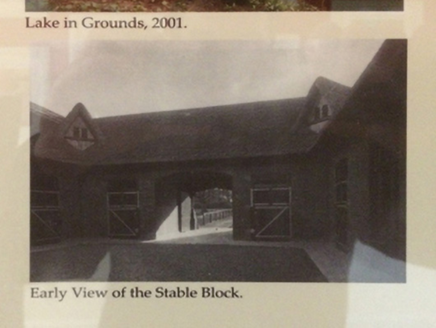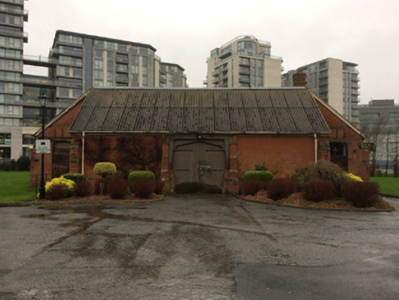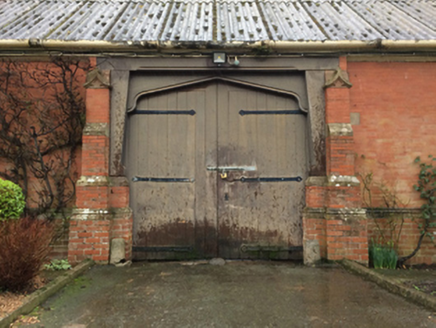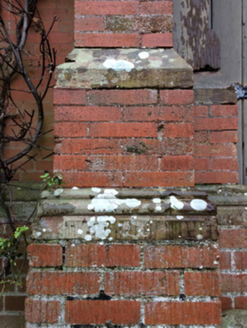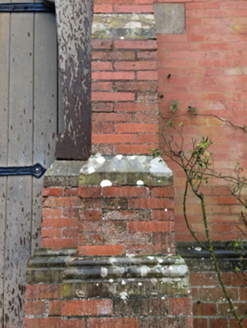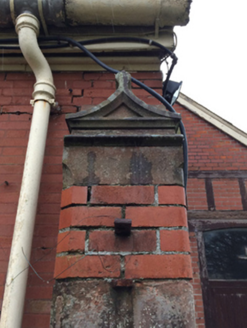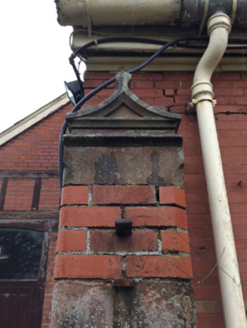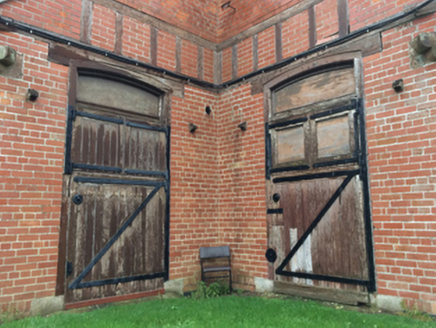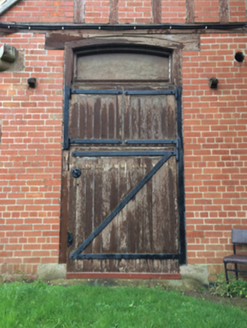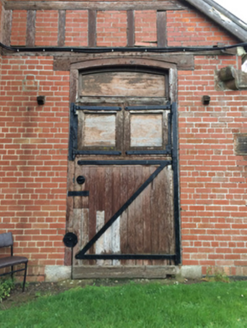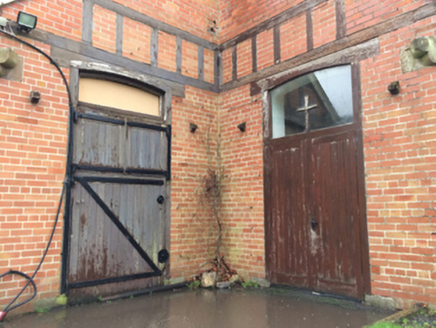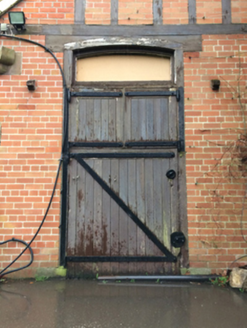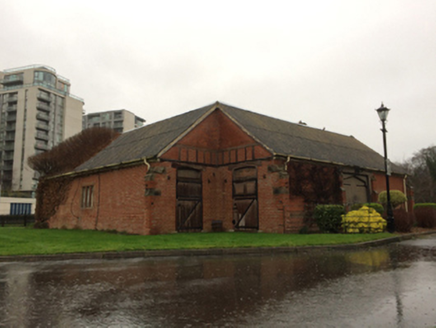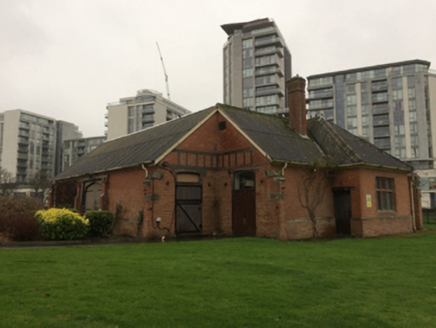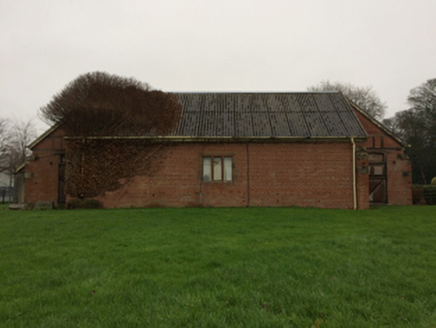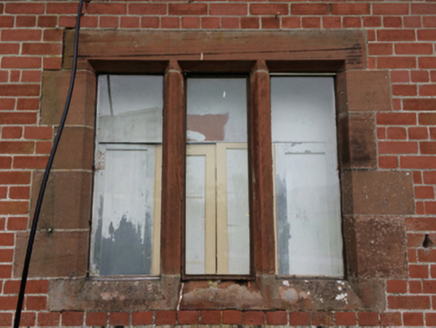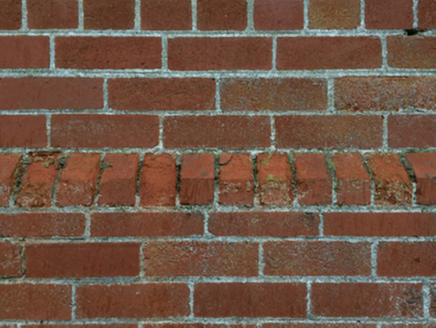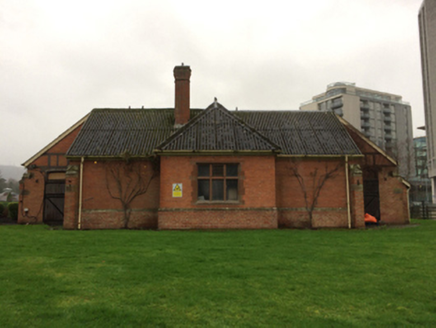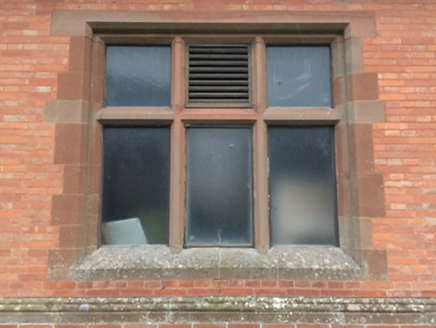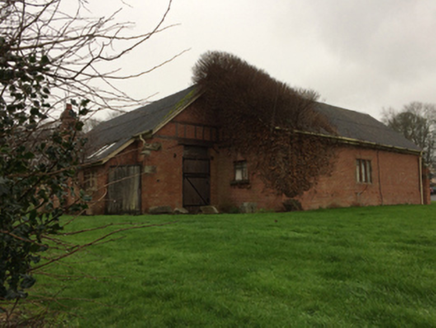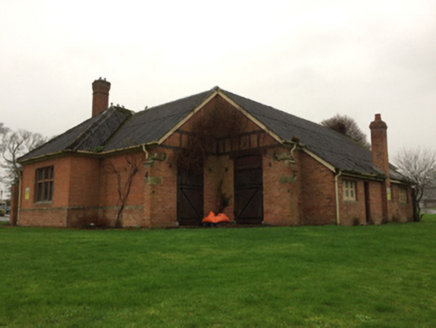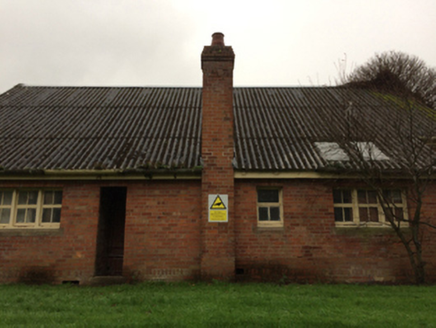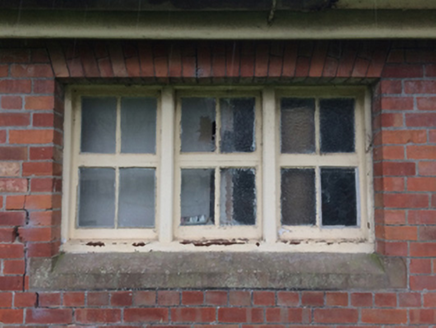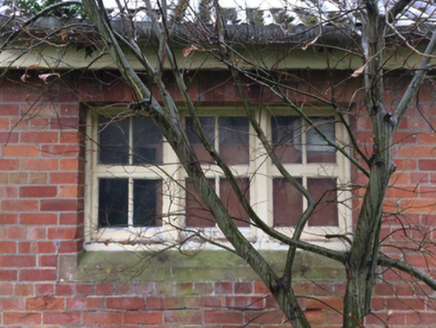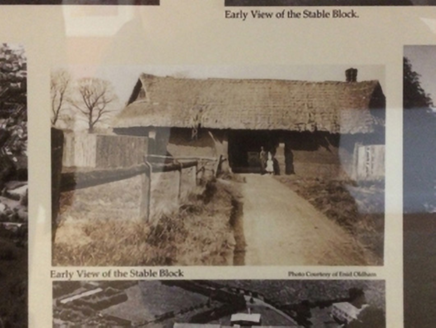Survey Data
Reg No
60230012
Rating
Regional
Categories of Special Interest
Architectural
Previous Name
Leopardstown
Original Use
Stables
Date
1877 - 1908
Coordinates
319971, 225896
Date Recorded
03/02/2017
Date Updated
--/--/--
Description
Stable block, extant 1908, on a quadrangular plan including (south): Attached three-bay single-storey wing on a rectangular plan. Pitched corrugated-asbestos roof with pressed iron ridge, and cast-iron rainwater goods on timber eaves boards retaining cast-iron downpipes. Part creeper- or ivy-covered red brick English Garden Wall bond walls on lichen-spotted moulded cushion course on red brick English Garden Wall bond plinth with buttresses to corners having roll moulded curvilinear gable-topped coping. Square-headed central carriageway between stepped buttresses with tapered posts supporting timber beam lintel having bull nose-detailed reveals framing timber boarded double doors. Camber-headed door openings with cut-granite padstones, and timber lintels framing timber boarded half-doors having overlights; (north): Attached three-bay single-storey wing on a T-shaped plan centred on three-bay single-storey lean-to breakfront. Pitched corrugated-asbestos roof on a T-shaped plan extending into lean-to corrugated-asbestos roof (breakfront) with pressed iron ridge, red brick Running bond central chimney stack having corbelled stepped stringcourse below capping supporting terracotta tapered pot, and cast-iron rainwater goods on timber eaves boards retaining cast-iron downpipes. Part creeper- or ivy-covered red brick English Garden Wall bond walls with buttresses to corners having roll moulded curvilinear gable-topped coping. Square-headed window openings in tripartite arrangement centred on square-headed window openings with lichen-spotted chamfered flush sills, and red brick voussoirs framing timber casement windows. Set in relandscaped grounds shared with Leopardstown Park.
Appraisal
A stable block not only contributing positively to the group and setting values of the Leopardstown Park estate, but also clearly illustrating the continued development or "improvement" of the estate following its sale (1877) to Sir James Talbot Power (1851-1916) with the architectural value of the composition, one interpretable as the simplification of a design by the Swedish-born William Douglas Caröe (1857-1938) illustrated in "The Building News" (30th September 1887, n.p.), suggested by such attributes as the quadrangular plan form centring on an open courtyard; the construction in a vibrant red brick offset by Dumfries red sandstone dressings demonstrating good quality workmanship; and the high pitched roofs originally showing a "rustic" thatch finish.
